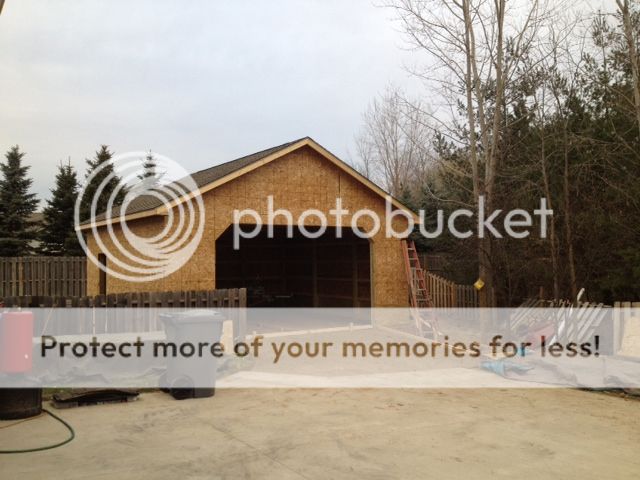Stockmanreef
Well Known Member
This is my first post to this website. I have my heart set on building an RV-10 and would like a little advice about setting up my shop. Of course, the exact plane does not matter for the shop setup, but I thought that it would be useful to mention.
Basically, I have a blank slate. I would post a picture, but I don't know how successful that would be in a first post. What I mean by blank slate is that I am in the process of building a 24' x 24' garage with 10' ceilings. Main door will be a 9' by 16' (which should allow the height to get the plane out eventually) and a back door 7' by 9'. The outside walls have been sheathed with OSB and the floor and lead up ramp will be poured this week. Hope to have to have the main structure done is a few weeks, then I have to wire electricity and gas. For the former, should I wire up 120V or should I bring in 240V? The latter will be for heat. Any suggestions about heat (live in mid MI)? I plan on insulating the walls and ceiling. Is there any insulation which would provide any sound barrier? Also, I plan to seal the floor with epoxy (most likely a plain gray, so I can see stuff I drop).
Questions:
1. best lighting--fluorescence or incandescent.
2. Outlets in ceiling?
3. Compressor (I was thinking of 50 gallon oil)
4. I am going to fix benches around the perimeter. Best width 36", 48", etc. plan on mounting tools in place.
5. is it necessary to put in central vacuum dust collector or is this just overkill?
6. would is be useful to make a bench on wheels to be able to move around? If so, then what would be the optimal size. Do I need something large enough to put the entire wing on or do I need a cradle to hold the wing during construction.
8. best way to store parts-in process and finished? Should I build shelves to hold the wings? I could put them above the back door. OR can I hoist them up and use ropes and "hang" them up.
9. thought on setting up an area for priming parts.
10. Any other useful suggestions would be welcome.
Brief bio: Chemist. Flying for about 3 yrs. IFR certification 2 weeks ago. ~260 hours of flight time. Currently a part owner in a Piper Cherokee six. I always need a hobby and in the middle of Michigan there is not much to do, so building a plane will keep me busy for a while. I have taken the Grov-air building course along with the rest of my family (wife and two daughters, so I have others to help out) about a yr ago and have been researching longer much longer. I hope to take advantage of the local EAA chapter; in particular, Dick Sip who has built an RV-10.
Thanks
Ken
Basically, I have a blank slate. I would post a picture, but I don't know how successful that would be in a first post. What I mean by blank slate is that I am in the process of building a 24' x 24' garage with 10' ceilings. Main door will be a 9' by 16' (which should allow the height to get the plane out eventually) and a back door 7' by 9'. The outside walls have been sheathed with OSB and the floor and lead up ramp will be poured this week. Hope to have to have the main structure done is a few weeks, then I have to wire electricity and gas. For the former, should I wire up 120V or should I bring in 240V? The latter will be for heat. Any suggestions about heat (live in mid MI)? I plan on insulating the walls and ceiling. Is there any insulation which would provide any sound barrier? Also, I plan to seal the floor with epoxy (most likely a plain gray, so I can see stuff I drop).
Questions:
1. best lighting--fluorescence or incandescent.
2. Outlets in ceiling?
3. Compressor (I was thinking of 50 gallon oil)
4. I am going to fix benches around the perimeter. Best width 36", 48", etc. plan on mounting tools in place.
5. is it necessary to put in central vacuum dust collector or is this just overkill?
6. would is be useful to make a bench on wheels to be able to move around? If so, then what would be the optimal size. Do I need something large enough to put the entire wing on or do I need a cradle to hold the wing during construction.
8. best way to store parts-in process and finished? Should I build shelves to hold the wings? I could put them above the back door. OR can I hoist them up and use ropes and "hang" them up.
9. thought on setting up an area for priming parts.
10. Any other useful suggestions would be welcome.
Brief bio: Chemist. Flying for about 3 yrs. IFR certification 2 weeks ago. ~260 hours of flight time. Currently a part owner in a Piper Cherokee six. I always need a hobby and in the middle of Michigan there is not much to do, so building a plane will keep me busy for a while. I have taken the Grov-air building course along with the rest of my family (wife and two daughters, so I have others to help out) about a yr ago and have been researching longer much longer. I hope to take advantage of the local EAA chapter; in particular, Dick Sip who has built an RV-10.
Thanks
Ken





